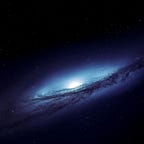What is the Great Attractor, and will it destroy us?
Our understanding of the Universe has expanded significantly in recent decades. However, just like before, we still have an innumerable number of mysteries of the Universe, and the Great Center of Gravity or, in other words, the Great Attractor is one of them.
After the Big Bang, as we know, the Universe began to fill space in all directions, and today this filling is only gaining speed. The space between different galaxies is increasing daily. Currently, the galaxies are drifting away from each other at a speed of 2.2 million kilometers per hour. It seems logical to assume that the speed of galaxies in vacuum, to the left and to the right of us, is the same, but this is not so. There is something that they encounter on their way that slows down their speed; these are huge clumps of matter. Matter is attracted to matter, which is why we can see galaxies forming into clusters and superclusters. However, this is still not enough for the calculations that astronomers make. Somewhere out there, far away in the most heavily veiled region of space, lies a massive gravitational irregularity that has been called the Great Attractor. For billions of years, it attracts us and all nearby galaxies to itself.
What is the Great Attractor?
The Great Attractor is believed to be located at the gravitational center of the Laniakea Supercluster, in which the Milky Way is just one galaxy among hundreds of thousands of others. What is he?
One theory is that it is a merger of dark energy. Alternatively, this phenomenon may be caused by an excess area of dense mass with intense gravitational attraction. Whatever it is, it’s powerful enough to overcome normal dark energy, the force that pushes galaxies AND causes them to gain speed as they move forward. Dark energy is thought to make up about 71% of the Universe. Unfortunately, today we do not know what it is.
Is the attractor really huge?
Between it and us lies a huge collection of stars and star clusters, not to mention the distortions caused by gases and cosmic dust.
Work at the Parkes Observatory brought new discoveries of entire galaxies, clusters of galaxies, and even new strands of the cosmic web. However, rather than helping to learn more, observations of this particular anomaly have only deepened the mystery surrounding it. The problem is that the excess density is on the other side of the Milky Way disk. Between it and us lies a huge collection of stars and star clusters, not to mention a mixture of gases and cosmic dust. All of this obscures the light that would normally come from that direction, which in turn hinders observation and learning. This area was nicknamed the Avoidance Zone. The Great Attractor is believed to be located right at its center. Sometimes something leaks through the avoidance zone. X-ray astronomers and radio astronomers are just beginning to understand what is on the other side. But the picture is still rudimentary
Will he really destroy us?
What astronomers know for sure is that our Galaxy and all those in our supercluster are heading towards the Great Attractor. No one really knows what this could mean or if our planet is in any possible danger. Astronomers say it will be several years before we know more about this anomaly. Some astronomers don’t consider this a threat, while others believe that all galaxies and clusters are condensing into larger and larger superclusters and that this could be how the Universe ends, as part of what is called the Big Crunch, which could theoretically be followed by another big bang.
